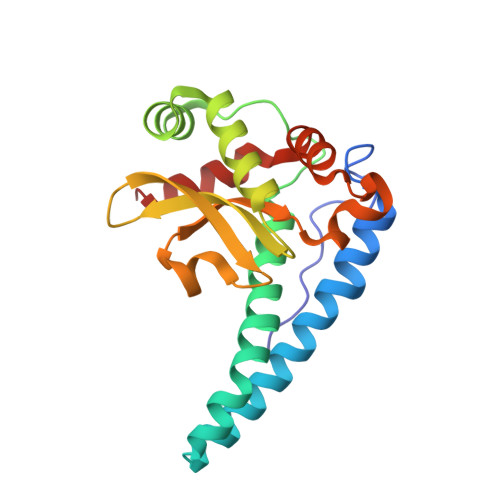Amino acid substitution at the dimeric interface of human manganese superoxide dismutase
Hearn, A.S., Fan, L., Lepock, J.R., Luba, J.P., Greenleaf, W.B., Cabelli, D.E., Tainer, J.A., Nick, H.S., Silverman, D.N.(2004) J Biological Chem 279: 5861-5866
- PubMed: 14638684
- DOI: https://doi.org/10.1074/jbc.M311310200
- Primary Citation of Related Structures:
1PL4, 1PM9 - PubMed Abstract:
The side chains of His30 and Tyr166 from adjacent subunits in the homotetramer human manganese superoxide dismutase (Mn-SOD) form a hydrogen bond across the dimer interface and participate in a hydrogen-bonded network that extends to the active site. Compared with wild-type Mn-SOD, the site-specific mutants H30N, Y166F, and the corresponding double mutant showed 10-fold decreases in steady-state constants for catalysis measured by pulse radiolysis. The observation of no additional effect upon the second mutation is an example of cooperatively interacting residues. A similar effect was observed in the thermal stability of these enzymes; the double mutant did not reduce the major unfolding transition to an extent greater than either single mutant. The crystal structures of these site-specific mutants each have unique conformational changes, but each has lost the hydrogen bond across the dimer interface, which results in a decrease in catalysis. These same mutations caused an enhancement of the dissociation of the product-inhibited complex. That is, His30 and Tyr166 in wild-type Mn-SOD act to prolong the lifetime of the inhibited complex. This would have a selective advantage in blocking a cellular overproduction of toxic H2O2.
- Departments of Pharmacology and Neuroscience, University of Florida, Gainesville, Florida 32610-0267, USA.
Organizational Affiliation:

















